Taking to the Field: a History of Australian Women in Science
As Jane Carey outlines in Taking to the Field, the first half of the twentieth century was a boom era for women working in Australian science. This book does much to recapture their presence, confidence and contributions.
READ REVIEW
↓
Taking to the Field: a History of Australian Women in Science
Jane carey | 2023
A full century ago – in 1924 – Frances Thorn declared that women had won the battle for equal access to higher education and professional careers. She spoke from a position of confidence, as President of the Australian Federation of University Women, and she was certainly not alone. As Jane Carey outlines in Taking to the Field, the first half of the twentieth century was a boom era for women working in Australian science. This book does much to recapture their presence, confidence and contributions.
Carey’s fundamental point is that by the 1920s, women comprised a significant proportion of scientific workers in Australia. Their intellect was essential to both teaching and practice, while their presence was unremarkable to many of their colleagues. What Carey argues is that structural gender imbalances only became entrenched from 1945, after which it proved far more difficult for women scientists to achieve recognition or advancement. These disparities became pronounced by the 1970s and still persist in the upper echelons of today’s universities.
This is an important book for understanding how women negotiated the career affordances of Australian culture in the nineteenth and twentieth centuries. The author is at pains to affirm that scientific pursuits were not only an accepted avenue, but a desirable option for those who sought an independent path. Entire disciplines – particularly the biological sciences and nutrition – were dominated by women from the 1920s into the late 1940s. These science workers thrived, thanks to their opportunities, talent, intelligence, dedication and the supportive networks they fostered. Carey’s assertions are backed up by data from period sources – especially university course admissions – as well as an extensive survey of women scientists that she conducted in the late 1990s.
Indeed, some respondents vigorously denied that their careers had suffered for their sex. ‘I freely grant that women have had a rough trot over the years’, wrote 1950s geology graduate Barbara Graham, but ‘it hasn’t been a bother to me personally … I was alright Jacqueline’ (p. 181). The women who could afford to attend university before mid-century enjoyed a degree of collegiality – and, as they saw it, equality – unrivalled in many other professions. This was not a false consciousness, Carey argues, but rather reflects the specific privileges of the bourgeois minority of women who could afford a tertiary education. For this reason, perhaps, many scientifically literate women of this period were vigorous proponents of eugenics, Australian style.
The book is curiously timed. It is based on the author’s doctoral thesis, submitted two decades ago, albeit brought up to date via a selection of contemporary touchpoints. One corollary is that the text is largely framed by a distinct male/female binary, rather than embracing today’s complex refractions of gender. This approach drives home just how comprehensively the field of women’s history fractured at the turn of the current century. Yet as the many examples in the book make clear, the distinction between women and men was historically important, if not as normative as one might think.
Reviewing the book’s sources also confirms that the 1980s and 1990s were a heyday for the history of science. It is striking that although Carey has updated her endnotes, the general historiography of science in Australia has not advanced substantially over the past two decades. This is primarily an institutional issue – there are fewer courses, students and practitioners in the field than there were last century.
Taken together, these observations remind us of how flexible – or faddish – historical trends can be. Thus the challenge for authors in revitalising older work, or in updating earlier editions, is to gauge how extensively to reframe their argument in light of today’s literature. While Carey has made a valiant effort, the very nature of the scholarship available has limited how she can couch her argument for contemporary audiences.
My primary reservation about this work is that ‘science’ itself is rendered as an unproblematic construct. Taking to the Field initially focuses on areas where women participated as ‘amateurs’ – especially natural history – before earning acceptance for their descriptive and analytical skills. But science itself was transformed between the 1880s and 1920s. It came to require undergraduate and then postgraduate university qualifications, while becoming highly specialised and institutionalised. Carey tends to presume that science only occurred in universities, although she occasionally nods to the highly male domains of industrial and government science, especially the Council for Scientific and Industrial Research. Moveover, it is unclear what the female ‘scientists’ actually did on a daily basis, and whether that labour was gendered at the bench or in the field.
Taking to the Field is well presented and edited, including valuable reference tables, although lacking illustrations. It is an excellent companion to Claire Hooker’s Irresistible Forces, a 2005 volume sharing a similar approach and interests. Together, they restore women to a rightfully leading place in the praxis of Australian science.
Taking to the Field is published by Monash University Press.
Reviewer: Peter Hobbins, PHA (NSW & ACT)

